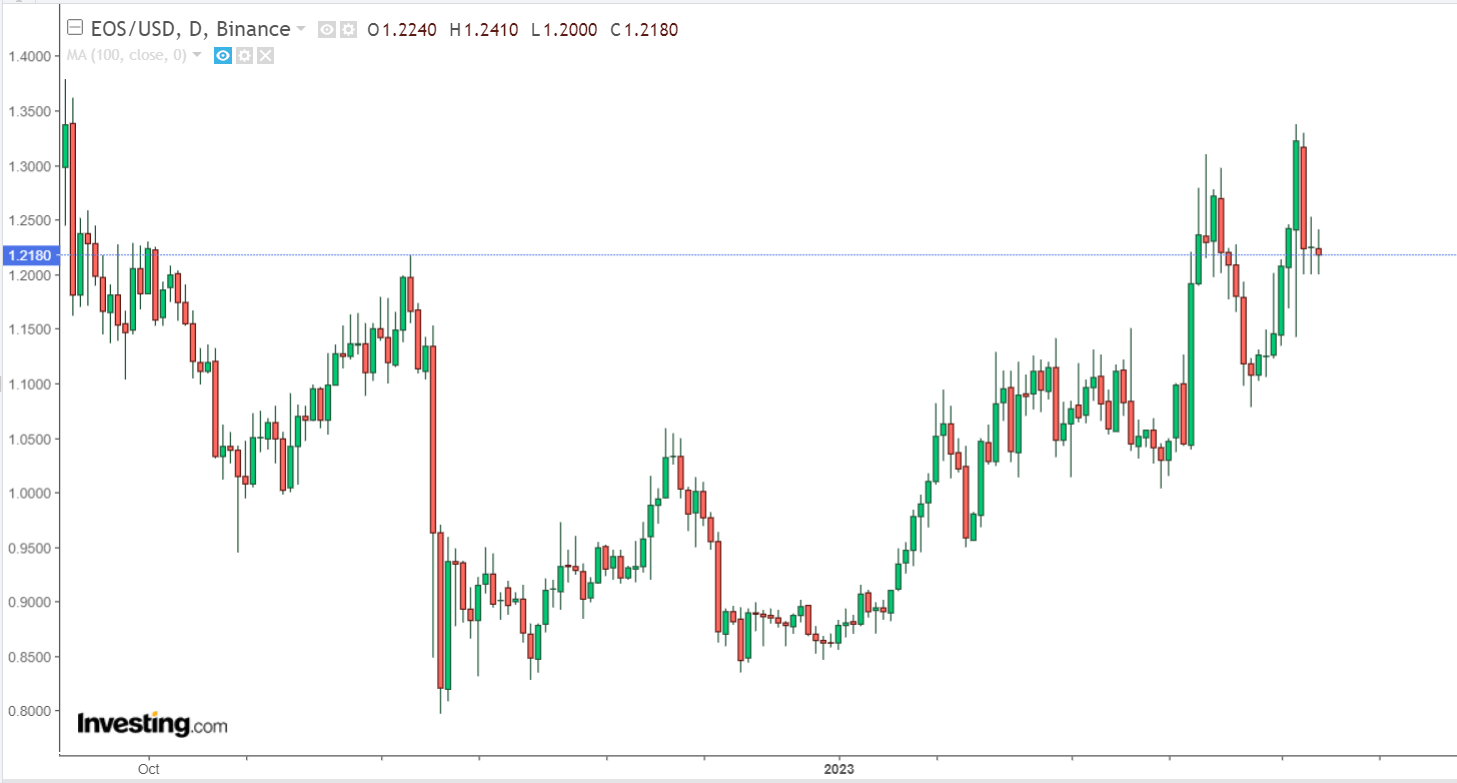According to a report (1), the monetary reward that is being considered for developers who create applications compatible with EVM and deploy them on the EOS blockchain would vary anywhere from $5,000 to $50,000. The reward amount will be determined by the magnitude and scope of the project.
EOS is among the legacy protocols that rose to prominence in 2018 due to its Initial Coin Offering (ICO), which eventually helped it raise close to $4 billion.
Unfortuitously, the protocol couldn’t live up to its expectations, and as a result, its importance was quickly eclipsed by other troubles.
In contrast to EOS, the community has undergone a steady change. Because Ethereum is leading the transition toward decentralized finance (DeFi), many initiatives have been forced to switch to Ethereum so that they may use its superior smart contract capabilities.
EVMs function like a smart contract ecosystem in that they give developers the ability to create apps or services that give the impression that they are hosted on Ethereum.
EOS users will have access to the largest and most liquid blockchain protocol in the system if a product that is interoperable with EVM is developed.
This is a step that is surely going to bring a lot of value in the future.
In a post published in January, the EOS foundation explained that
“many of the devs who already have left EOS have done so not as they wished to, but rather because Ethereum, for all its inadequacies, is where the real action is.”
They said,
“EVM interoperability is crucial to the prospects of EOS, not only technologically but additionally from a business point of view.”
Ultimately, we must invite more users and developers of Solidity to EOS, and an EVM on EOS is a fantastic bridge to do just that.
EOS’s Attractiveness as a Platform for EVM’s Use
Currently, each protocol is technically pleased with its abilities regarding the transaction throughput it can achieve, the costs associated with doing so, and its capacity to scale.
EOS takes great pleasure in being a flexible organization that is prepared to adapt to any circumstance, in contrast to Ethereum, which enjoys the advantage of being the first mover and has a large number of active developers.
A consensus mechanism, an EVM solution, and a revived expansion strategies are all now in line to supplement each other as the protocols look to move into the next sphere cruising on the attempts of Yves La Rose, the CEO of the EOS Network Foundation.
When contrasted to those of goods developed by other competing projects, the capacities of the EVM solutions that run on EOS will be improved.
According to a tweet (2) that Rose published the previous week,
“Integrating the efficiency of EOS with the expertise of Ethereum, Solidity devs are in for a treat. With more than 800 swaps per second, the $EOS EVM will be BY FAR the fastest EVM; it was benchmarked three times faster than Solana and BNB and twenty-five times faster than Avax.”
The validity of these claims is still disputed; nonetheless, EOS has a number of upgrades and upgrades planned for after the EVM launch, which is scheduled for April 14.
At the time of writing, the EOS token was exchanging hands at $ 1.2180, down 0.67 % on the daily candlestick chart.

